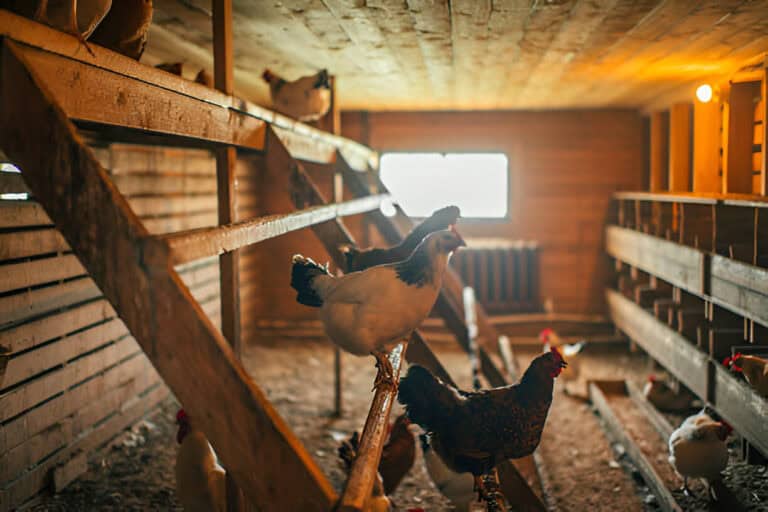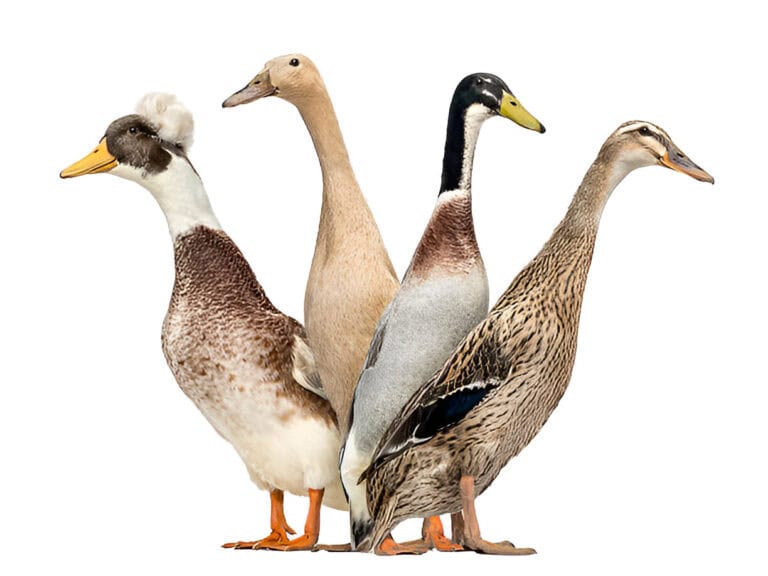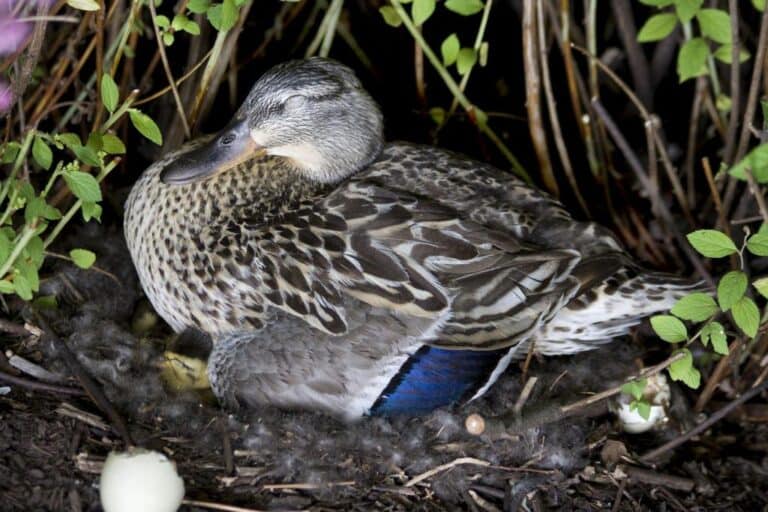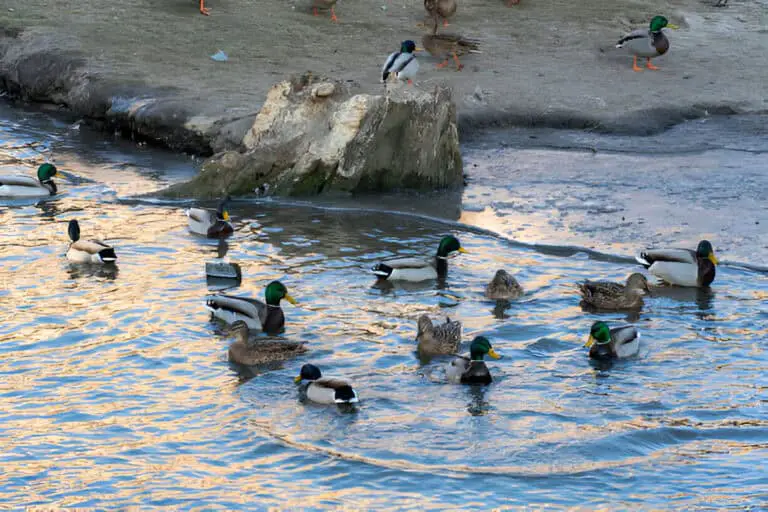White Goat Breeds: 10 Most Popular & Beautiful Goats Type

Goats have been kept by humans for centuries and are one of the oldest domesticated animals. They are intelligent, curious, and playful animals that make great companions.
Goats are also incredibly diverse, with hundreds of breeds to choose from. There are many different types of goats, but the most popular and well-known are the white goat breeds.
White goats come in a variety of shapes and sizes, but they all share common features that make them beloved by farmers and homesteaders around the world: their beautiful coats of white fur.
In this post, we will be exploring the top 10 most popular and beautiful white goat breeds. From the Angora goat from Turkey to the Somali goat from Africa, there is a white goat breed for everyone. We’ll talk about their pedigree, breeding traits, and history, among other things.
Whether you are a farmer looking to add some new livestock to your farm or just a goat enthusiast looking to learn more about these adorable animals, this post is for you. So let’s dive in and learn more about these amazing white goat breeds!
Angora Goat
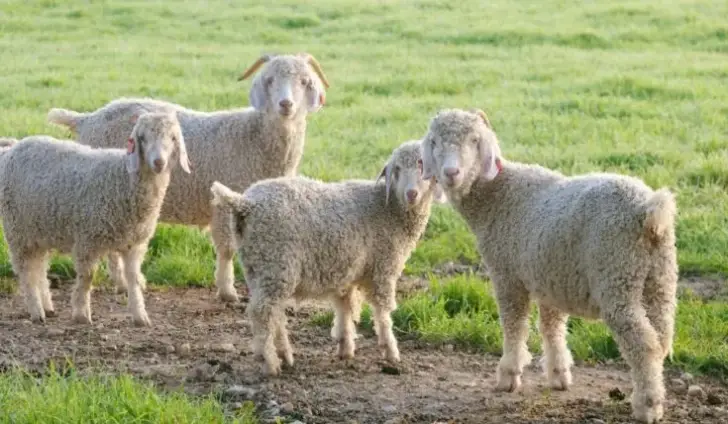
Angora Goat
The Angora goat is a breed of domesticated goat that is named for the Ankara region of Turkey. In the United States, they are a small breed of livestock, but in Europe and Asia, they are very popular.
Angora goats are typically white, but they may be black or brown in color and have a prominent, curled mane on the top of their heads. They have long ears, and their hair can be twisted and wrapped around a cylindrical wooden pail to create the yarn.
Angora goats are known for their long, soft hair, which is often used to make yarn or cloth. Angora goats are capable of producing a soft, fine fiber. The fibers are most often used to make yarn and cloth because they are durable, strong, and can be stretched out to become very thin.
Angora goats come in a variety of sizes and weights. The weight of Angora goats varies a lot, with males (called “bucks”) being much bigger than females (called “does”). Bucks often weigh between 180 and 225 pounds, while ducks typically weigh between 100 and 110 pounds.
Appenzell Goat

Appenzell Goat
Appenzell goats are a Swiss breed that are known for their white coats and gentle temperaments. The Appenzell goat is a rare breed of white goat that is indigenous to Switzerland’s Appenzell region.
These goats are known for their small size and weight, and they typically do not grow larger than 36 inches in height or weigh more than 65 pounds. They are a hardy breed that is able to thrive in cold climates.
They are considered dairy goats, producing milk with high butterfat content. Appenzell goats are hardy and adapt well to a variety of climates.
These energetic and lively goats may produce up to a gallon (3.79 liters) of milk each day, and the doe can milk for up to ten years.
Both male and female goats can have beards, and naturally polled animals are those that are born without horns.
They’ve got some of the best personalities. Young goats may be quite lively and energetic, and they just want to have fun or go on exciting adventures. They are naturally interested and clever, and they use their lips to investigate the majority of strange items. As a result, it’s critical to keep the area free of toxic plants and other potentially dangerous materials. Kids will try to check things out since they are curious.
Australian Cashmere Goat
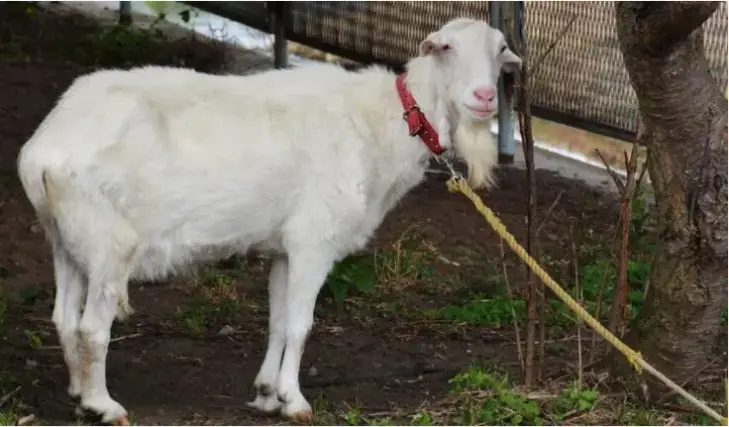
The Australian Cashmere goat is a type of domestic Cashmere goat that comes from Australia. They are a hardy breed and are able to adapt to a wide range of climates.
They are a medium-sized breed and are usually polled (hornless). The breed is a medium-sized animal, with males weighing about 45 pounds and females weighing 25 pounds.
Cashmere goats are famous for their gentle temperament and long hair. They are known for their long, silky cashmere fur, which makes them an attractive pet.
They can also fight off parasites and diseases, which makes them a great breed for making cashmere. They are bred for their fiber, which is used to make cashmere wool.
The fiber is sheared from the goats’ coats once a year. The fiber is then spun into yarn and woven into fabrics. The fiber is used for sweaters, coats, sweaters, scarves, gloves, hats, and other items. The fiber is also processed into yarn used to make bedding, rugs, and throws.
A cashmere sweater is a must-have during the cold winter months. Cashmere is a lightweight yet warm material that comes from the undercoat of a cashmere goat.
So, how many cashmere goats does it take to make a sweater? The answer is that it takes about two and a half cashmere goats to make one sweater. The reason for this is because the fiber from a cashmere goat is very fine and has to be carefully separated from the goat’s coat.
Fainting Goat
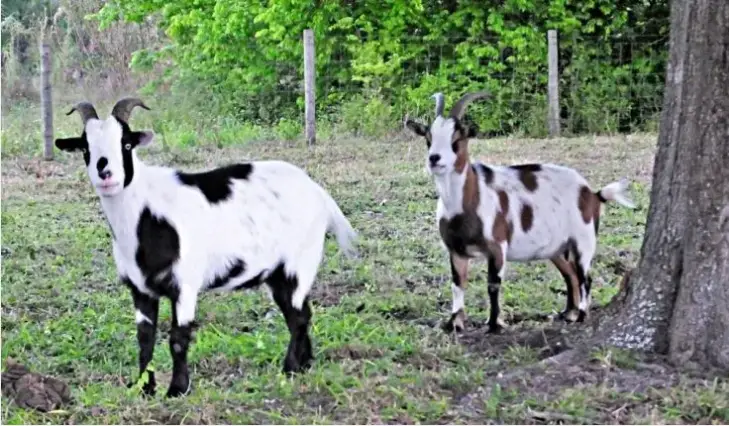
Fainting goats are a breed of domesticated goat that was first developed in the United States. They get their name from the fact that they often faint or “pass out” when they are startled.
They are typically small in size and weigh around 30 to 55 pounds. They are also short in stature, measuring in at an average of twenty-four inches from head to hoof. Fainting goats can live up to 12 years, but the average lifespan is around 7 to 8 years.
No one can argue that fainting goats are adorable. With their big eyes and floppy ears, they’re hard to resist. But are they good pets? Fainting goats make good pets because they are friendly, easy to care for, and entertaining to watch.
They can be great companions for people who have the time and patience to care for them. They’re active animals that need plenty of room to run and play, and they require a lot of attention.
Most people think these goats are pretty unusual, and pet owners like them because they do funny things.
Fainting goats are also used in the production of cashmere, which is considered by some to be the finest and softest goat fur. Fainting goats are not typically used for meat or milk, but they are popular pets due to their strange behavior.
Finnish Landrace Goat
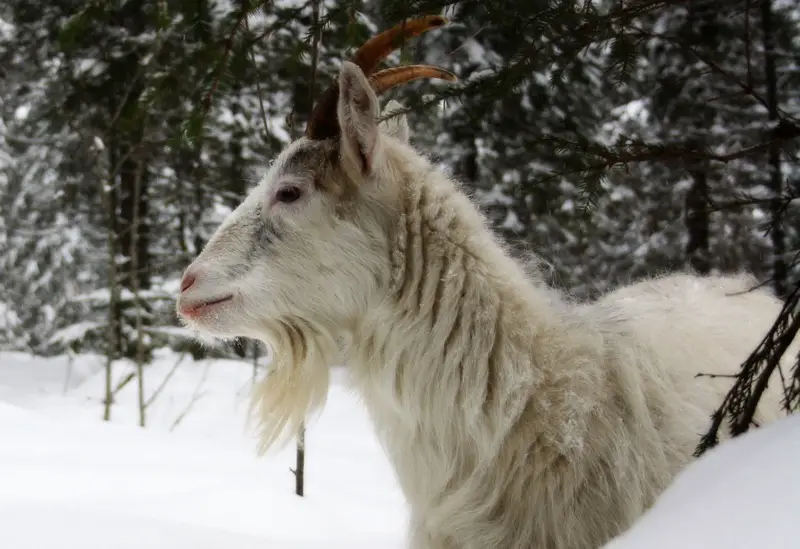
Finnish Landrace goats are an old breed that might have come from Finland. They are a dairy breed and are known for their high-quality milk, which is often used to make cheese. Finnish Landrace goats are also known for their hardiness and adaptability, which makes them a good choice for small farmers.
These goats are medium-sized, with adults averaging around 75 pounds and weighing up to 110 pounds. They are also quite long-lived, with an average lifespan of 10–12 years.
The Finnish Landrace goat is a breed that has been around for a long time. It is known for its long, shiny coat and calm nature. The hair of Finnish Landrace goats is coarse and long, with a rich undercoat. In general, the coats are white, although they can also be black or pied.
Finnish Landrace goats are well-suited to both meat and dairy production, and are a popular choice for small-scale farmers.
Girgentana Goat
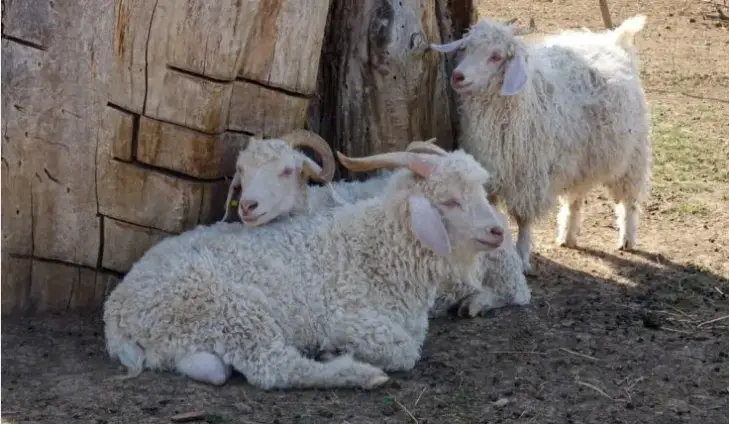
The Girgentana goat is a breed of domesticated goat that is found in the Sicilian province of Girgenti. This breed is known for its high-quality, milky cheese, which is made from the goats’ milk.
They are usually medium to large in size and heavy in weight. The average Girgentana goat weighs around 150 pounds and can reach a weight of up to 200 pounds.
Goats of the Girgentana breed are distinguished by their distinctive coloring. The hair on their body and fur is white or black, but they have a white stripe that runs down the center of their head and neck. A white blaze is also visible on their forehead. Some Girgentana goats may also have white patches on their legs, chest, and stomach.
Horns and beards are a common feature of Girgentana bucks and does. When completely developed, the horns spiral into a whorl.
The Girgentana goats are known for their sweet, mild temperament. They are also very fertile and have an average lifespan of around twelve years.
Jonica Goat
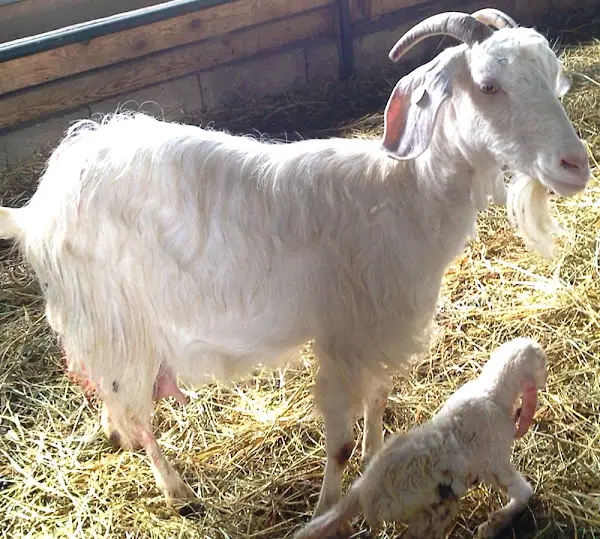
The Jonica goat comes from the province of Catanzaro in southern Italy. It is a medium-sized breed. They are typically white with black markings, but there are also some brown and gray goats in the population.
Jonica goats are a small, hardy breed popular in Italy. It is known for its good temperament and high-quality milk production. Jonica goats are typically light brown or white, and males weigh about 75 pounds and females weigh about 55 pounds.
They are known for their gentle temperament and are often used as dairy goats. Jonica goats can produce up to 350 liters of milk per year. They are generally healthy and tough animals, but they are susceptible to parasites.
Russian White Goat
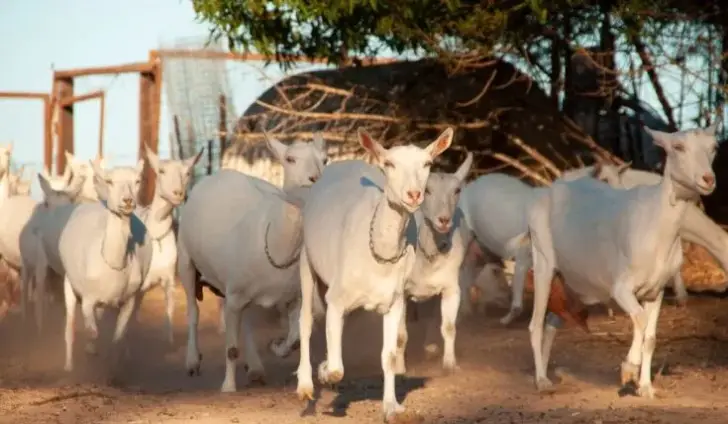
Russia is home to the Russian White goat breed, which is a dairy goat breed. It is also known as Russian Dairy, Russian White Dairy, Improved Northern Russian, and Russkaya Belaya.
In Russia, the white goat is considered a symbol of good luck. They are commonly kept as pets, and many people believe that they bring good fortune to their owners. According to legend, the white goat is a spirit that lives in the forest and can appear to people when they need help. The white goat is often called upon to help with difficult tasks or to grant wishes.
White goats can be found all over Russia, and they are often seen in rural areas.
Russian white goats are medium-sized and weigh around 130 pounds. They have a white coat with a black head and legs. They are known for their gentle temperament, good milk production, and white coat.
Saanen Goat
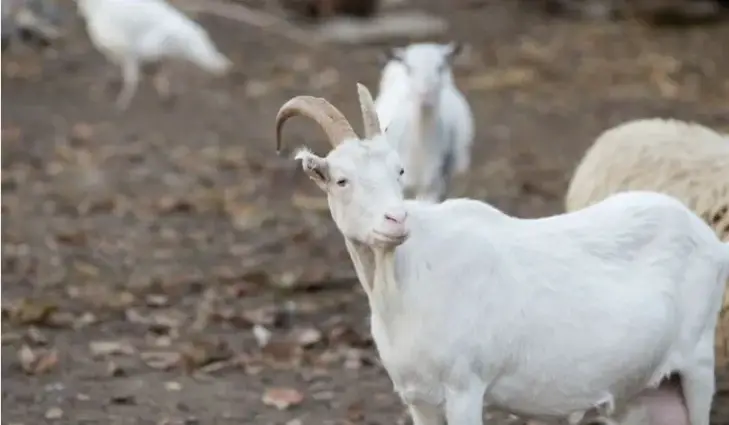
Saanen goats are a dairy goat breed that originated in the Saanen valley of Switzerland. Saanen goats are decent breeders. They only reproduce once a year, and each birth may result in one or two young.
They are a large, white goat with a gentle temperament and are the most popular breed of dairy goat in the world. The average weight of a Saanen buck is between 155 and 195 pounds. The average weight of a doe is between 130 and 155 pounds.
Saanen goats are used for milk, meat, and fiber and are known for their high-quality milk, which is often used to make cheese. They are typically raised on commercial dairy farms, but can also be found in small herds or as pets
Saanens are a medium- to large-sized breed with a long, erect neck and a sleek, white coat. There are occasional black spots on the udder, ears, and nose of the breed. Despite the fact that they’ve been bred for polledness, goats that have horns are still popular since they have fewer reproductive issues. This creature’s ears are upright, medium-length, and pointed toward the front.
Somali Goat
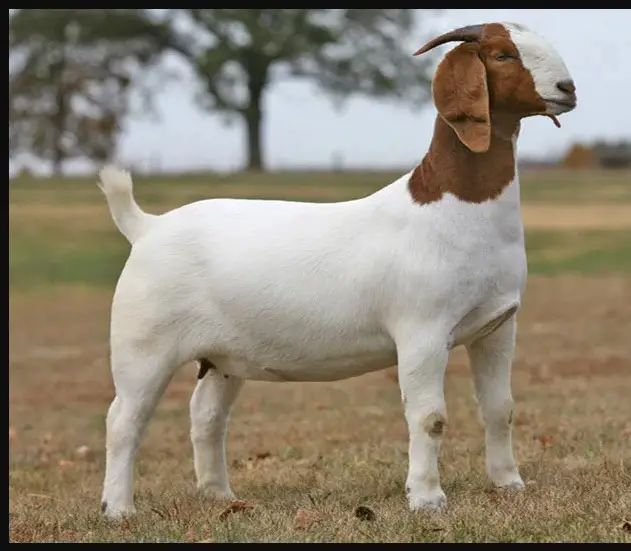
The Somali goat is a breed of goat that is found in Somalia, northeast Kenya, and other parts of East Africa. They are predominantly bred for their meat.
The hairs are usually white, but they may sometimes be spotted with black or brown. They are a unique breed because they have long hair that hangs down over their eyes. The horns of the Somali goat are also long and curved, and they are often used to make jewelry or other decorative items.
They are medium- to large-sized goats. The adult male and female Somali goats of the long-eared Somali breed measure 75.8 cm and 69.4 cm in height, respectively.
The Somali goat can survive in a wide variety of climates. They are efficient grazers and can thrive in hot, dry climates. They have also been known to adapt well to cold climates. Furthermore, they are renowned for being amiable and submissive. This goat’s breed is known for its hardiness and adaptability.
Other Popular White Goat Breeds
There are some prominent white goat breeds that did not make the list of the 10 Most Popular and Beautiful White Goat Breeds above. They are the Alpine goat, Nubian goat, LaMancha goat, and Oberhasli goat.
These breeds each have distinctive traits and personalities of their own. They were not added to the list due to not being predominantly white. They are still considered a popular and lovely goat breed, but that is a subjective point of view.
Why Do People Like White Goats?
People’s appreciation for white goats can be attributed to various factors, including their association with Jewish folklore, their appearance, and their personality traits. Some reasons why people like white goats are:
- Jewish folklore and literature
White goats, particularly the small white goats or klor vays tsigele, are a familiar figure in Jewish folklore, art, and literature. They are mentioned in the Aramaic song “Chad Gadya” sung during the Passover seder and appear in works by Yiddish writers such as Mendele, Peretz, Sholem Aleichem, and Isaac Bashevis Singer. Jews celebrated goats because they lived with them, and even the poorest shtetl family kept a goat tethered in front of the house to provide milk for the children.
- Appearance
White goats are often associated with rugged grandeur and soundless solitude, as they can be found in their mountain haunts. Their white color can be striking and majestic, making them an appealing sight in their natural habitat.
- Personality traits
Different goat breeds have unique personality traits, and some white goat breeds, such as the Boer goat, are known for their calm and quiet demeanor. This can make them more approachable and enjoyable for people who interact with them.
- Cultural significance
In some cases, white goats have been associated with specific cultural or religious practices. For example, the white goat was once used in ancient Greece for the sacrifice to the god Pan. Additionally, white goats have been used as symbols of the Jewish people and the Yiddish Book Center.
Overall, people’s appreciation for white goats can be attributed to their association with Jewish folklore, their appearance, and their personality traits. These factors have contributed to the enduring popularity of white goats in various cultures and traditions.
Pros and Cons of Raising White Goat Breeds
Raising goats has become an increasingly popular activity for farmers and hobbyists alike. Before you decide to raise white goats, it’s important to think about their pros and cons. We’ll talk about the good and bad things about raising white goat breeds so that readers can make an informed choice.
Pros
Cons
- Good milk production. White goat breeds are known for their high milk production. This makes them a good choice for small-scale dairy farming or for raising goats for personal milk consumption.
- Friendly personality. Many white goat breeds are known for their friendly and docile personalities. This makes them easy to handle and work with, especially for those who are new to raising goats.
- Versatility. White goat breeds can be used for a variety of purposes, including milk production, meat production, and as companion animals.
- Adaptability. White goat breeds are generally adaptable to a variety of environments and climates, making them suitable for raising in many different locations.
- Need for space. For grazing and roaming, goats need lots of space. If you don’t have a large pasture or yard, raising white goat breeds may not be practical.
- Special feeding requirements. Goats require a balanced diet that includes hay, grains, and fresh, clean water. If you are not able to provide a proper diet, raising white goat breeds may not be a good choice.
- Potential for health issues. Like all animals, white goat breeds can be prone to certain health issues. It is important to research the specific health concerns of the breed you are considering and be prepared to manage any potential issues that may arise.
- Time and labor. Raising goats requires a significant amount of time and labor. You will need to devote time to feeding, watering, and caring for your goats on a daily basis.

